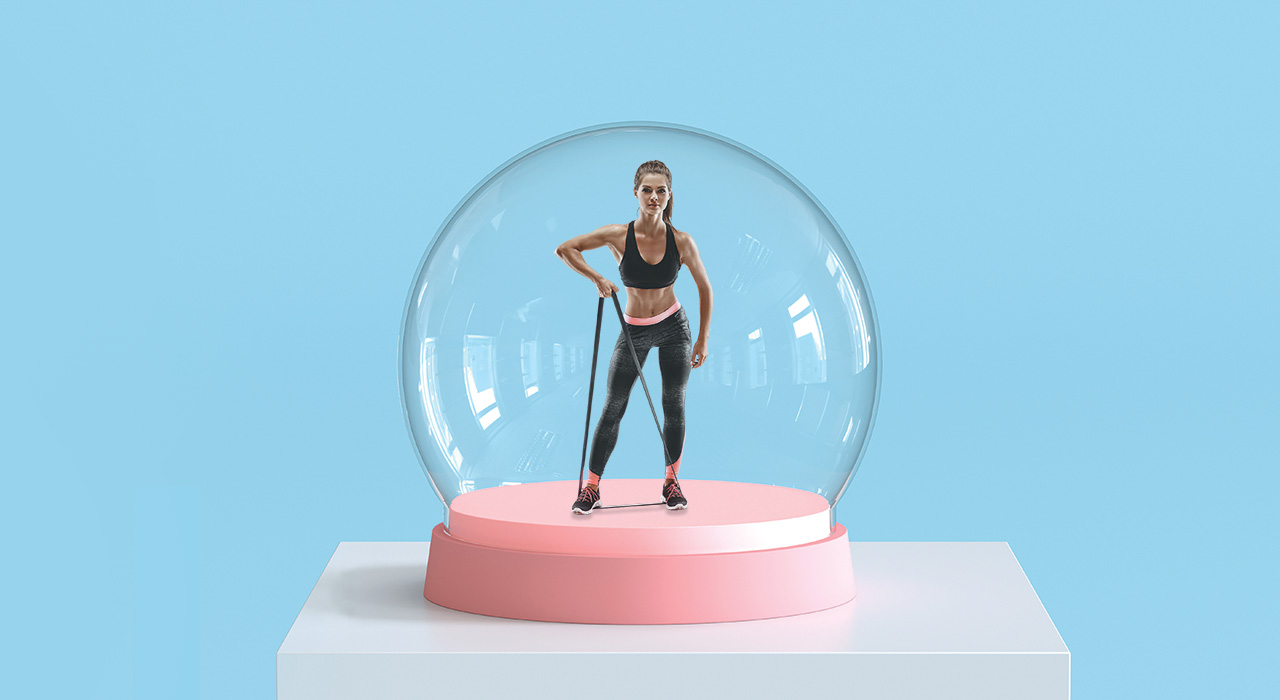Weight Loss
Why We All Need Fat To Be Lean
Good, bad, brown, white, or even beige – fat comes in many different forms which is probably why there are so many misconceptions regarding it. Understanding exactly what it’s good for and how to make it work for your body is key if you want to look and feel great. Welcome to the facts on fats.
Once you really get to know your fat, you will learn to love it. Because fat is not all bad, in fact it’s far from bad, it’s what gives you the energy to dance on the beach until dawn, what keeps your skin glowing and soft, and even what gives you that mental edge at work.
What’s more, without it, you’re dead. And by dead, we mean dead as in not-alive dead. New research on how fat works in our bodies has even led to scientists calling for us to stop thinking of it as ‘excess tissue’ but as an organ, as essential to your health as the kidneys or liver.
Without fat in your cell membranes they wouldn’t be flexible. Cell structures that are inflexible would be fragile and prone to damage. Fat also helps control the movement of substances in and out of cells. Some types of fat in the brain shield the cells, helping to ensure that signals aren’t lost.
Even triglycerides – seemingly ‘bad’ in that everyone seems to want lower levels of them in their blood samples, are essential – these three-fat-molecules are what give you energy. Linoleic acid, a specific kind of fat, doesn’t store energy at all – it works to suppress inflammation in the body. Via fat, leptin controls your appetite – without fat, your appetite goes haywire.
When you consider how inflammation is connected with health issues such as allergies, asthma, and heart disease, not to mention blemishes on your skin and dandruff, you can see why everyone needs a very new view of fat.
Getting to know your fat
There’s white fat, the stuff you want to lose when you lose weight – it’s where energy is stored for future use, which is fine if there’s not too much of it. However, if the white fat cells expand too much you end up overweight. Then there’s brown fat, which helps regulate heat, keeping you warm when you’re cold. There’s even beige fat – research from Dana-Farber Cancer Institute pinpointed this ‘new’ type of fat cell, which can turn into brown fat with certain triggers like exercise.
Brown fat is used to create body heat and so also burns calories rather than stores them.
But of course, one of the main functions of fat is to store energy. And, unfortunately, storing energy often means a bigger butt, a thick waist or saddle bags on your thighs.
But the stuff filling out your jeans is not the same as the stuff in butter, cream or olive oil. It’s not like you eat fat, digest it only to have it ‘sit’ in the squishy parts of your body.
So-called ‘fat cells’ (called adipocyctes) which make up your ‘fat’ body areas don’t only contain fat from what you eat – instead, they store energy in a specific form, triacylglycerols. These triacylglycerols consist of glycerol and three fatty-acids.
The fat stored in your body comes from both the fat you eat, and the conversion of extra nutrients into fat by a number of processes. “The fat in your body isn’t just due to fats in the diet, it’s also a result of extra calories and how your body processes and store them. Foods high in sugar that provoke excess insulin release will, in particular, cause more fat storage. In addition, your genetics, gender, age and bacteria in your gut will also play a role in how much fat you store,” says Dr. Sylvia Tara, author of The Secret Life of Fat (WW Norton & Company).
“Triacylglycerols are also processed from carbohydrates and other nutrients – which is why cutting out fat from your diet isn’t the solution to weight loss. If triacylglycerols were simply made up of fat, avoiding eating them would make fat cells shrink quickly and easily, which it doesn’t.”
Cracking the fat cell code
One problem with so-called ‘fat cells’ is that because they are storehouses of energy, they don’t give up that energy as easily as, for example, glucose streaming through the bloodstream. When energy in the form of glucose or fat or whatever is in the bloodstream it gets used by the body easily. Once energy is stored within a ‘fat cell’ your body needs to instigate a new chemical conversion to get it back out again. This is where insulin comes in. When you’ve just eaten, insulin levels help to ensure that the fatty acids stay inside the adipocyctes – you’ve got plenty of energy in your bloodstream from the food you’ve just eaten, so they’re not needed right now. If you allow insulin levels to fall (by exercising or not eating), epinephrine increases and binds to the adipocyctes, helping to trigger the separation of the fatty acids from the glycerol, setting them free to be used up by your body.
So, if you’ve already used up all the energy that was coursing through your bloodstream, and you’re exercising, for example, your body will begin the process to break down the fat cells, freeing up that locked-in energy, and helping you lose fat… except where does the fat go? Here’s the thing (whisper it) – no one really knows exactly where it all goes. As you most likely know, substances don’t ever disappear completely and when the energy stored in your fat cells is ‘burned off’ it must go somewhere – in the case of exercise, your muscles may use the energy and convert it into heat, giving off water and carbon dioxide, for example. Fatty acids in muscles end up oxidized to produce energy, or they may be stored within the muscle. But to date, scientists can’t say for certain exactly where the fat ‘goes’ once it’s burned up.
There’s no saying goodbye to fat cells
Wherever it goes, the important aspect for you is that you lose weight when it’s processed by your body during exercise or exertion. The ‘weight’ you lose is a result of those fat cells emptying and being transformed into something else. But here’s the thing – those fat cells don’t disappear, they’re just not stuffed to the brim as they were before. Which means that they can easily get filled up again if you overeat or simply fill up on too many calories without increasing your output levels.
Unfortunately, there are many, many factors at play with regards to how your input (food) and output (activity) will balance out. Some people burn more calories without doing anything at all. Others just have to look at food and they seem to put on weight. This is often simply down to a different basal metabolic rate.
Nearly three quarters of the energy in your body is used up simply by existing. Your body uses up that amount of calories to keep your heart pumping, your cells regenerating and so on. Another 10-15% is used up via the process of digestion, and the rest is used via activity. So, you might think, the only way to lose weight is to get more active, specifically hitting that ‘fat-burn zone’ on the cardio machines. But again, it’s more complex than that.
Firstly, by increasing muscle strength, you can increase your basal metabolic rate. You’ll burn more calories when doing nothing if your muscles need more energy simply to exist.
Second, while it’s true that in the lower-output ‘fat-burning’ zones on exercise machines you’ll burn calories, you’ll burn more calories in the cardio zone. So why do they categorize the machines that way? Because in the first 20 minutes or so of high-intensity exercise your body will use up the available glucose or energy, that’s running free in your bloodstream – so if you stop after 20 minutes (which you may well do, if it’s very intense) your fat-storing cells may not get targeted. You finish feeling hungry, eat, and you’ve lost no weight at all. All you’ve done is burned off the calories you ate before working out.
The idea is that if you go for the ‘fat-burning zone’ on the machine, you’ll last longer, burn off those free-floating calories and go on to burn some fat cells too. In reality, you may just end up not having targeted your fat cells at all. The solution? Mixing up the two, leaning towards high-intensity. Because the more energy you burn, the more of those fat cells you’ll empty out. Aim for bursts of high-intensity exercise followed by maintained slower rhythm on the machine.
Love your fat
With all the focus on fat burning, it’s important to remember that some of us are genetically ‘healthy’ at different sizes and shapes.
So focusing on burning all your fat could do you more harm than good. If you’re working out hard and often, eating healthy fresh food and yet still feel ‘fat’, it may be that that’s your healthy. And while focusing on reducing fat is a goal many of us have, it’s important to be aware of how essential it is, especially for women.
Without the right fat levels during puberty, for example, a girl may not start getting her periods. Similarly, a woman with an excessively low body fat percentage will struggle to get pregnant too. But this isn’t simply a case of ‘there’s not enough energy to produce a baby’ – it’s because fat is also a source of estrogen.
“The subcutaneous fat in a woman’s body can convert male hormones into estrogen,” says Dr Sylvia Tara. If there’s not enough fat for the body to do this properly, it can create obstacles to pregnancy.
By drastically cutting out fat from your diet and working so hard to remove it from your body, you could end up harming yourself in surprising ways.
Research on rats, for example, showed that without sufficient fat, brain tissue was affected and a study from the University of California Berkeley suggests that fat is even needed to protect against brain disease such as Alzheimer’s, Parkinson’s and Huntington’s. Fat, via leptin, also improves brain function – activity is stimulated, brain tissue in areas such as the hippocampus, cerebellum and others actually grows. And guess what those parts of the brain regulate? Memory, learning and appetite. Fat is absolutely essential for almost everything you do.
Of course, as with all food types, you can have too much of a good thing and some fats are better for you than others. Unsaturated fats are more beneficial than saturated fats, but both are needed for a healthy balanced diet. In fact, to date, trans fats, which in our diets come mainly from partially hydrogenated fats, are the only fats that can truly be classified as ‘bad’ – research from McMaster University, reviewing available evidence, found that trans fats, not saturated fats, were linked to a greater risk of heart disease and associated health issues.
So, it seems that thanks to recent scientific findings, the war on fat is officially over. Fat is more than just healthy, it’s an organ that you need to look after just like any other.














